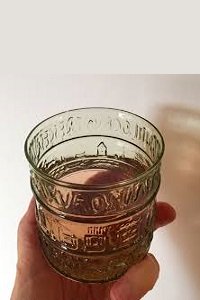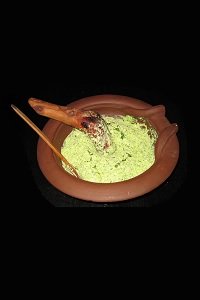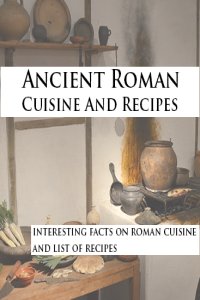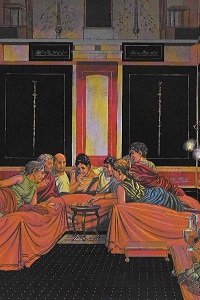How to make Roman bread: a Roman bread recipe
Bread was a staple food in Ancient Rome consumed by all social classes. It was originally made of emmer, a cereal grain related to wheat, and it is only during the Empire that wheat was used to make bread. The lower classes ate bread with little bit of salt while wealthy Romans also ate it with eggs, cheese, honey, milk and fruit. Bread was also consumed with meat, olives and was dipped in wine.Roman bread varied in quality depending on the quality of the flour used which varied greatly depending on the kind of grain used, on the way the millstones of the Roman mills were set and on the fineness of the sieves. Flour could contain lots of dust and bits thereby making the bread rather coarse. Over time, Roman bread often wore down people's teeth as Romans had to chew the bits of grains contained in it! Wealthy Romans usually ate bread made of the best quality wheat flour (fine flour) whereas poorer Romans ate bread made of bran only (bran is the hard outer layers of grain). There was also bread made from groat grain, rye, acorn and millet.
Romans enjoyed several kinds of bread and bread recipes were just as diverse as they are today. Lentaculum was made of emmer and a little bit of salt, and had flat and round loaves. Artolaganus was a kind of fatty cake bread that was made of meal which was like a coarse unsifted powder ground from the seeds of wheat grain. Speusticus (from the Greek word: σπευστικός) was a hastily made bread. The Parthian bread was kneaded and soaked in water before being baked giving it a light soft texture. There were also honey and wine soaked breads such as picennum which was a sweet bread baked with nuts and honey in clay molds. The molds had to be craked before the bread could be eaten. There were many other kinds of breads such as bread eaten only with oysters or "water bread" which was light and full of holes, just like a sponge according to Pliny.
Bread was baked at home or purchased at the bakery. There were many bakers throughout the city of Rome. There were also expert bakers specialized in local and foreign versions of bread. In Pompeii, over 30 bakeries and a large number of rotary mills to grind grains were found thereby proving that Romans consumed a lot of bread!
Roman bread recipe
Cato the Elder gave us a simple recipe in his agricutural handbook called "De Agri Cultura" written in 160 BC. The book was actually a guide to managing a farm and it contained a basic recipe to making bread, the kind of bread that any Roman would have made at any stage in Roman history.Cato writes:
"Recipe for kneaded bread: wash both your hands and a bowl thoroughly. Pour flour into the bowl, add water gradually and knead well. When it is well kneaded, roll it out and bake it under an earthenware lid." Cato, De Agri Cultura, 74.
Cato recommended baking the bread under an earthenware lid. We believe that it made the bread softer and gave it a better taste. It is worth noting that spelt bread is increasingly being sold in health shops and some bakeries.
Ingredients:
- get 500 grams (circa 1 pound) of spelt flour (triticum spelta)
- 350 ml (1 1/2 cup) of water
- a little salt
- 1 1/2 tablespoon of olive oil
Cooking instructions
Preheat an oven to 180o C (350 F).
In a large bowl, add the spelt flour along with a little salt.
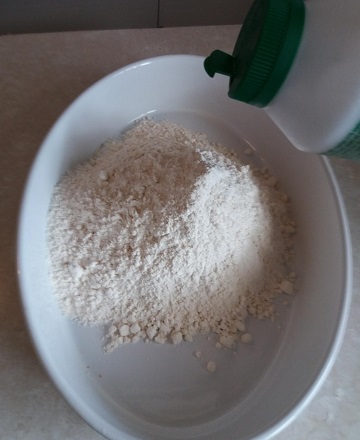
|
Mix it.
Pour the olive oil in the bowl.
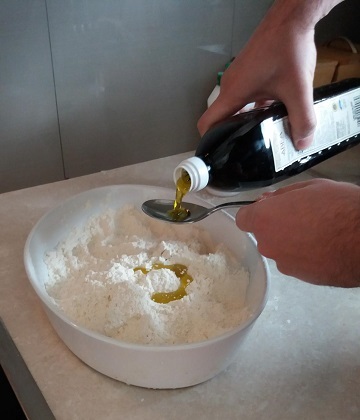
|
Gradually add the water and continue mixing until you get a dough that isn't too sticky or floury.
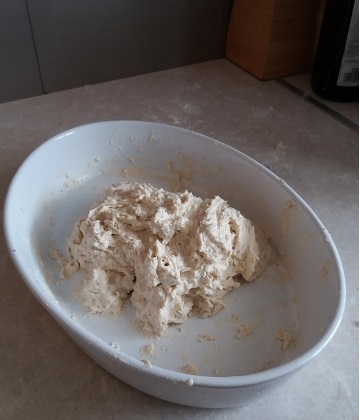
|
Knead the dough and make it into a circular shape. Make marks on the top of the dough with a knife dividing it into 8.
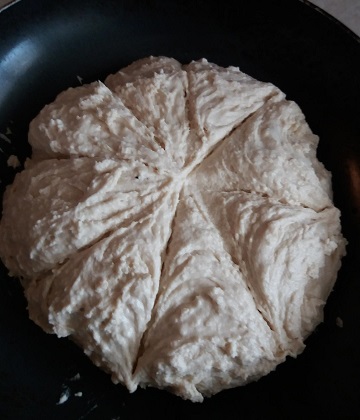
|
Bake for 45 mns in the oven. If you can cover it with a lid.
Your Roman bread is ready to be served. Please note that since no yeast is being used, the bread won't have risen much if at all.
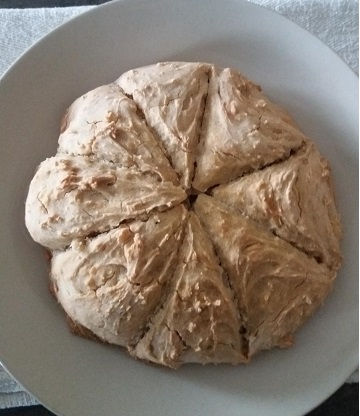
|
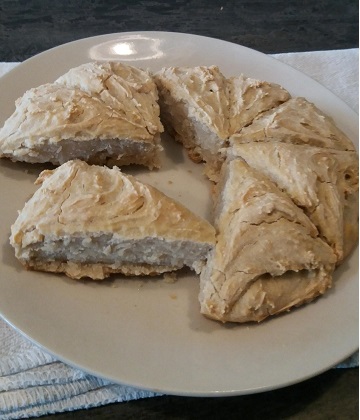
|
Our bread actually looks similar to the one found in Pompei:
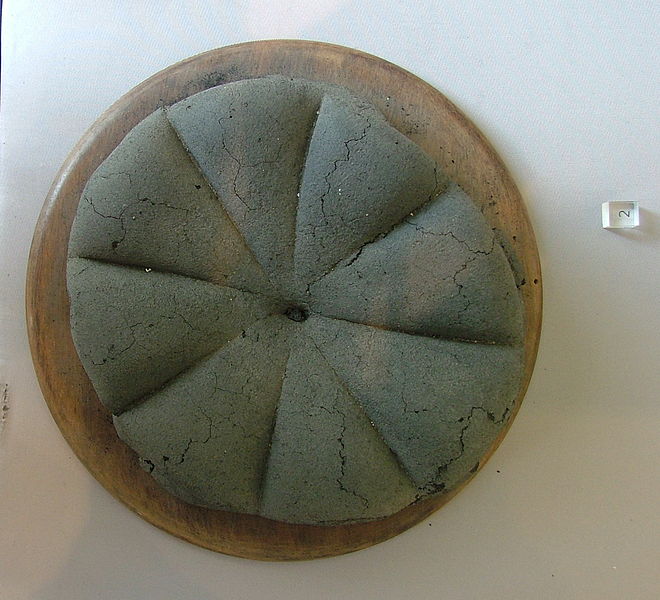
found at Pompei CC BY-SA 2.0 it |
Note that the bread in the picture above is black as it was carbonized following the volcano eruption!
Another Roman bread recipe
This is a simple recipe that would have been used by an ancient Roman baker or by soldiers in the Roman army.Ingredients:
- 2 teaspons of dry yeast
- 600 ml (2 1/2 cups) of water
- 250 grams (1 cup) of wholemeal wheat flour
- 250 grams (1 cup) of white flour
- 1 teaspoon of salt (dissolved in 1 tablespoon of water)
Cooking instructions:
- Pour the water in a mixer bowl.
- Dissolve the yeast.
- Put the cups of flour into the bowl.
- Mix the flour for a few minutes.
- Gradually add the (warm) water and the tablespoon of salted water.
- Whip it for 5-10 minutes until you get a dough that isn't too sticky or floury.
- Knead the dough so that it becomes smooth and elastic.
- Make circular loaves with the dough.
- Place the dough on a tray (used for baking) and cover it with cling film.
- Put the tray in a warm place like near a heater and leave it for an hour so that it rises.
- Once the loaves have doubled in size put them in an oven with the temperature set at 220 C (430 F) for 20-25 minutes until the crust is golden.
- Let the loaves cool.
YOU MAY ALSO LIKE
Return from Roman bread to Ancient Roman Food
Return from Roman bread to Homepage
